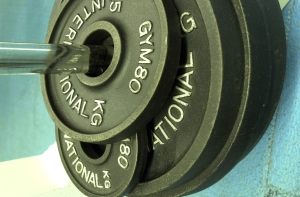What can be done when two athletes, applicants for a job, or products perform equally well? The strategy used for resolving ties and determining bid limits decides on whether competition is pushed or not. In tennis, for instance, the tiebreak generates excitement. In other types of sports, the tie is resolved in favor of the supposedly weaker: In weightlifting, the athlete with the lower body mass is declared the winner. In and outside of sports, competition is often pushed by letting the supposedly weaker competitor win in case of a tie. This is the result of a study on all-pay auctions by economists of Karlsruhe Institute of Technology (KIT).
“This is not just a marginal setscrew,” says Professor Nora Szech, Holder of the Chair of Political Economics (ECON) of KIT. “Handling of a tie may have enormous impacts.” For example in case of applications. In Germany, members of underprivileged groups of society, such as women or people with a handicap, are granted the job in case of the same qualification. ”This is not only politically correct, but leads to positive incentives for all applicants,” the expert says.
The underlying idea is that supposedly weaker usually have to perform better to reach the same objective. “When women think that they have a real chance, they increase their effort. In turn, also men as the supposedly stronger applicants will make a greater effort.”
“We very much discuss about how diversity can be supported. Our study shows the consequences of certain instruments,” Szech explains. Using the Nash equilibrium, a mathematical method of game theory, the scientist analyzed various rules for tiebreaking and bid caps in all-pay auctions. In an all-pay auction, all persons participating have to invest, but only one will profit in the end. The bid will pay off for the winner only. Tiebreaking and bid caps can be used to control behavior in competition. If the bid cap is set low, the fighting spirit is reduced. The financially weaker know that they can compete and the stronger restrain themselves, because they can easily reach the bid cap. Among others, Szech’s study shows that in the event of ties, the symmetric solution, i.e. fifty-fifty, mostly is not the best. Tiebreaking by letting the under-capitalized win strengthens competition: The weaker is given a real chance, the stronger has serious competitors. The result is that both try harder. This principle can also be found in other professional or sports competitions.
An empirical study made by Szech in cooperation with British and US economists, in which 240 test persons competed in various competitions of all-pay character, confirmed that bid caps and tiebreaking rules may have drastic impacts on competition. “Our research results can also be found in various real situations,” Szech says. An example is the away goals rule in playoffs of the Champions League: According to this rule, away goals decide in the event of a tie after teams have played each other twice, once at each team’s home ground. It favors the guest team that gets less support at the other team’s home ground and, hence, has the supposedly weaker role. Another application is lobbying in the USA, where introduction of bid caps for the financial commitment of lobby groups is discussed to reduce competition for political influence. Such caps may be successful, if they are chosen appropriately. “A tiebreak in favor of the stronger lobby group typically reduces bids on both sides: The bids of the weaker, because they cannot keep up anyway, and the bids of the stronger, because they know this and reduce their lobbying efforts,” Szech says.
More Information:
The theoretical study “Tiebreaks and bid caps in all-pay auctions” has been published in the journal “Games and Economic Behavior” and won the Reinhard Selten Prize of the Verein für Socialpolitik. The empirical follow-up study was made in cooperation with economists Aniol Llorente-Saguer (Queen Mary University of London, UK) and Roman Sheremeta (Weatherhead School of Management, Cleveland, USA).
Being “The University in the Helmholtz Association”, KIT creates and imparts knowledge for the society and the environment. It is the objective to make significant contributions to the global challenges in the fields of energy, mobility, and information. For this, about 10,000 employees cooperate in a broad range of disciplines in natural sciences, engineering sciences, economics, and the humanities and social sciences. KIT prepares its 22,800 students for responsible tasks in society, industry, and science by offering research-based study programs. Innovation efforts at KIT build a bridge between important scientific findings and their application for the benefit of society, economic prosperity, and the preservation of our natural basis of life. KIT is one of the German universities of excellence.

